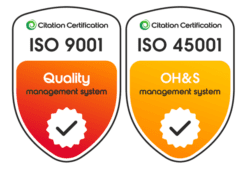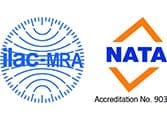Liquid Dye Penetrant Testing is a crack testing tool that will spot surface defects as well as fatigue cracks
Whether required for certification, evaluation, or peace of mind, testing is a fundamental process that ensures your equipment can be used safely and according to its designated application.
When the goal is to detect surface-breaking defects on your equipment, a Liquid Dye Penetrant Test is an excellent crack testing tool that will spot surface defects as well as fatigue cracks on your in-service components.
Liquid Dye Penetrant Testing Method
Originating from the railway industry of the early 1900s, Liquid Dye Penetrant Testing is a widespread crack testing method that goes by many names: dye penetrant inspection (DPI), liquid penetrate inspection (LPI), penetrant testing (PT) or simply dye-pen (DP).
A versatile, quick, and cost-effective method to locate surface cracks, it is a Non-Destructive Test (NDT) type technique which does not impact the specimen’s properties and future fitness for use.
The principle behind Liquid Dye Penetrant Testing is called capillary action: the tendency of liquids to flow into narrow spaces
Liquid Dye Penetrant inspection is suitable for any non-porous material, either metallic or non-metallic, such as ceramics or plastics.
Conductivity and magnetism do not have an impact on LDPT efficacy; however, it is unsuitable for dirty or very rough surfaces.
A similar crack testing method is called Magnetic Particle Testing (MPI), and, as per its name, it makes use of magnetic particles, rather than dye, to find fractures
MPI has its core application on ferrous materials, where it can detect cracks thanks to magnetism, even under the surface.
The main draw of Liquid Dye Penetrant Testing over MPI lies in its suitability for ferrous and non-ferrous materials, whereas MPI only works with the former.
While Liquid Dye Penetrant Testing is a relatively straightforward process, some precautions are necessary both before and after the testing procedure. Surfaces must be free of foreign materials and paint.
Negligent cleaning of the specimen beforehand may produce non-relevant (i.e. indications due to foreign material, such as dirt, or rust) or false results (cracks obstructed with said foreign material).
Another instance where inexperience or negligence can prove to be costly is post-test cleaning.
In fact, penetrant can travel behind the welds and impair the future operation of the equipment, or bleed out and contaminate coating and processes.
Liquid Dye Penetrant Testing is mainly performed to confirm that an individual piece of equipment is suitable for use after a period of service, potentially after a significant strain. Often, the inspection is mandated by a Standard requirement.
Liquid Dye Penetrant Testing Services
Reliance Hexham offers crack testing and inspection services for materials, components and assembled products using Liquid Dye Penetrant Testing.
We can carry out LDPT as a separate process, or following a proof load test, to ensure that the material has not formed any surface cracks.
Testing can be fulfilled in our workshop, on-site, or at any other location required, ensuring minimal impact on our customer’s daily operations.
This type of testing is not currently covered by our NATA accreditation but is carried out by a Level 2 AINDT Technician and a Test Report is issued which is supported by our quality management system that is certified to ISO 9001:2015.
Other Testing
Liquid Dye Penetrant Testing is a valuable tool for new products and in-service inspections alike. This type of testing is highly sensitive to surface cracks; however, it may not be useful in locating discontinuities under the surface. To this end, Magnetic particle testing may be better suited.











